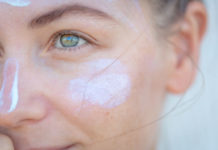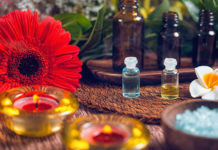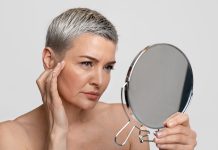
Why it appears and how to treat it naturally. by elizabeth cherevaty, bsc, nd
There’s no doubt that the cold winds and lack of sunlight make it a challenge to maintain healthy-looking skin in the winter months. But skin care between the months of December and March is an even bigger challenge for the two percent of the population who suffer from the itchiness and discomfort of the dreaded “P” word: psoriasis.
Psoriasis is a chronically recurring non-contagious, hereditary condition characterized by patches of silvery, scaly skin on red or inflamed patches. It most often afflicts the scalp and the backsides of major joints.
According to the Psoriasis Education Program, the condition is caused by an error in the immune system that causes skin cells to reproduce and mature at an accelerated rate. While normal skin cells mature and shed in a 28-day cycle, in psoriatic skin cells mature in only three to six days and pile up because they can’t shed quickly enough. As a result, the top layer of the skin thickens and redness develops as blood vessels expand and multiply. In some sufferers, the joints become inflamed as well.
Inflammation is a crucial player in the development of psoriasis. In a person with psoriasis, T-cells release signaling chemicals called cytokines, which inevitably promote inflammatory processes. The raised, scaly patches also contain high levels of arachidonic acid, a
pro-inflammatory fatty acid found in red meats, animal fats, and dairy products.
If you’re thinking about going the natural route for your psoriasis treatment and putting an end to inflammation and itchiness, consider the following tips:
Fatten Up
Essential fatty acids (EFAs) such as EPA from fish oils and ALA found in cold-pressed flax seed oil decrease arachidonic acid levels in the skin and support healthy skin cell membranes. While you can get these essential fatty acids directly from foods (by eating fatty fish like salmon, for example) for convenience and to refrain from the unpleasant taste associated with some oils (such as flax), supplements in capsule form are good alternatives.
Say No to Nightshades
While some fats are good for your skin, others are not. If you have psoriasis, it’s important to minimize your consumption of animal and dairy fats, as well as omega-6 vegetable oils such as peanut, sunflower, and safflower, which support arachidonic acid production in the body. Wheat and nightshade vegetables (eggplant, peppers, tomatoes, potatoes) can also make your skin worse. While the debate is still raging over why these foods cause inflammation, nightshades have long been associated with another inflammatory condition — arthritis.
Get Spicy
For an extra anti-inflammatory boost, spice up your cooking with rosemary, turmeric, and ginger, and wash it all down with herbal tea brews like rooibos or a decaffeinated green variety. These spices and teas are high in antioxidants, essential oils, and other inflammation-fighting phytochemicals.
Top-notch Topicals
Psoriatic skin needs hydration. Humectant moisturizers like shea butter, jojoba oil, and vitamin E will help smooth scaly skin by filling in the spaces between flakes. Neem (Azadirachta indica) is a botanical medicine traditionally used in the Ayurvedic system to beautify and heal the skin. Neem seed oil can be applied topically to psoriasis-affected skin to slow cell turnover, ease discomfort, and normalize its appearance within four-to-seven days of use. Capsaicin cream (an extract of cayenne) can elicit a 60 percent improvement in psoriasis symptoms when applied daily to affected areas for six weeks, but take care to reduce the dose if any burning sensation occurs.
While psoriasis is an uncomfortable and seemingly complicated condition, it can be treated without the need for steroid creams and pharmaceuticals. With some changes to your diet and the application of some natural creams and oils, your epidermis could be looking smooth and soft the next time winter rolls around.
References
Langley RG et al.(2006). Recommendations for incorporating biologicals into management of moderate to severe plaque psoriasis: individualized patient approaches. J Cutan Med Surg 9(Suppl1):18-25.
Lebwohl M (2005). A clinician’s paradigm in the treatment of psoriasis. Journal of the American Academy of Dermatology 53(1Suppl).
Murray MT, Bongiorno PB (2006). Textbook of Natural Medicine.
Lowes MA et al. (2004). Current concepts in the immunopathogenesis of psoriasis. Dermatologic Clinics 22(4).
Dr. Garrett Smith, “Nightshades: An Introduction” Performance Menu Journal, Volume 3, Issue 33, October 2007.













